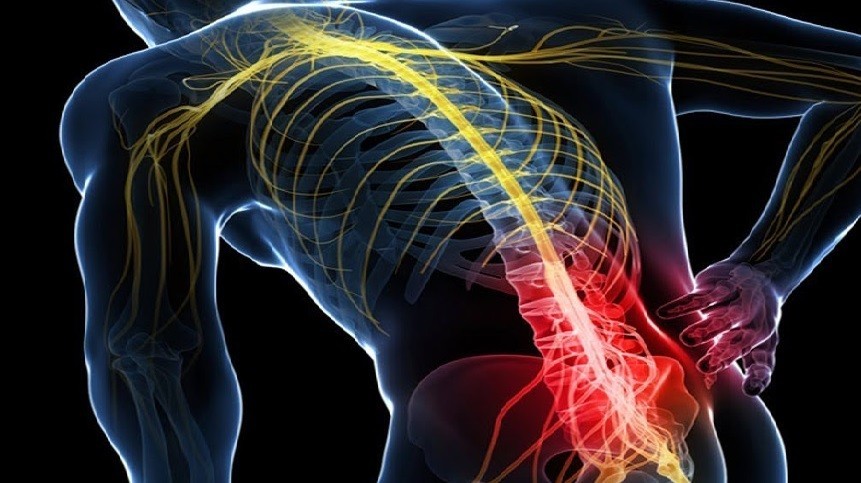Everything you need to know about sciatica
Most often the term ‘sciatica’ is mistaken for lower back pain. However, sciatica isn’t simply restricted to the back. The sciatic nerve is the longest nerve in the human body. It runs from the lower back, through the bottom, and down the legs, finishing just beneath the knee. In the event that you unexpectedly feel pain in your lower back or hip transmitting to the rear of your thigh and into your leg, it means you are most likely experiencing sciatica. The sciatic nerve may be irritated, compressed, or inflamed by a number of problems in the lower back, causing the pain. As many as 40 percent of people will get it at some point during their lives – mostly between the ages of 30 to 50, due to the general wear of ageing, or due to any sudden pressure on the discs that cushion the bones of your lower spine.
What are the symptoms ?
- Pain radiating down the thigh into the ankle which is worse on coughing and sneezing and movement.
- A tingling sensation or pins and needles or numbness
- Occasionally there may be associated weakness
- Herniated discs – Research shows that most cases of sciatica are caused by a herniated disc. It occurs when the outer cartilage of the disc that separates your spinal bones weakens resulting in a “slipped disc” or prolapse . The disc and material contained within it can compress and irritate the nerve roots which make up the up sciatic nerve, resulting in the sciatic symptoms Spinal
- stenosis – Spinal stenosis is a narrowing of the central space within your spine, which can put pressure on the sciatic nerve roots. It occurs most often in the lower back and the neck.
- Spondylolisthesis – Spondylolisthesis is a condition that can be associated with as one gets older, as a result of a congenital abnormality or as a result of stress fractures in your spine. It occurs when one spinal bone or vertebrae extends forward over another, and in the process pinches the nerves that make up your sciatic nerve.

How to analyse sciatica?
At Pinnacle, our doctors will start off by listening to and understanding your full medical history. They will then assess how your pain started, where it travels, and exactly what it feels like. The detailed analysis will also include whether you have had any recent injuries or relevant other history. The assessment will be followed by a physical examination, assessing spinal movement and nerves in the lower leg by testing your muscle strength and reflexes. You might be asked to squat and rise, walk on your heels and toes, or other such tests by your doctor to evaluate your results. Magnetic resonance imaging (MRI) scan is likely to be requested to confirm the diagnosis regarding which nerve roots are affected.
Is sciatica nerve pain the same as back pain?
It is different from back pain because it radiates from the lower back into the leg, whereas the discomfort in back pain is in and around the lower back without radiation into the leg. That is why it is very important to speak to one of our specialist doctors for a full diagnosis. Our doctors will then work with you to create an appropriate treatment plan.
Can sciatica go away on its own?
How can you manage sciatica during pregnancy?
Although many women experience lower back pain in pregnancy, it is unlikely to be sciatica. Usually, the baby’s position pressing down on the sciatic nerve contributing to the pain should resolve itself after the baby is born. However, you can contact Pinnacle to help you with the pain and to discuss options such as prenatal massage, yoga or other drug-free treatments for pain during your pregnancy.
Can sciatica go away on its own?
The condition resolves itself, given adequate time and rest in 80% to 90% of patients without medical intervention, typically within 8-12 weeks. Some commonly suggested self management treatments are:
- You can take nonsteroidal anti-inflammatory drugs such as ibuprofen or paracetamol.
- Gentle heat or cold compresses on your painful muscles can also help in relieving pain. It is also advised to keep moving as this can help
- Simple back exercises can also be effective.
However, if the pain is severe and self management treatments are not helping, you need to see a specialist, who can medically treat your pain by using:
- Epidural or nerve root block steroid injections
- Regenerative medication such as stem cell therapy
- PRP injections
When should you contact a doctor?
Call one of our doctors at Pinnacle if:
- Your symptoms are not improving with self-care
- You still have the flare- up
- Pain is more severe than previous flare ups




